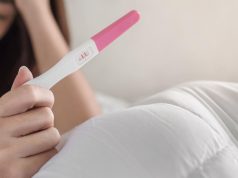Just over one-third of women experienced improvement in symptoms across treatment modalities
By Lori Solomon HealthDay Reporter
TUESDAY, Sept. 5, 2023 (HealthDay News) — Seven in 10 women with pelvic organ prolapse (POP) report overactive bladder (OAB) symptoms, according to a study published online July 13 in the International Journal of Womenâs Health.
Komkrit Aimjirakul, M.D., from Mahidol University in Bangkok, and colleagues examined the prevalence and risk factors for OAB symptoms in women with POP and compared the improvement of OAB symptoms among treatment groups: pelvic floor exercise, pessary, and surgery. The analysis included 754 patients seen at a urogynecology clinic (2016 through 2020).
The researchers found that the incidence of OAB symptoms was 70 percent and two-thirds of patients (65 percent) reported moderate-to-severe bother. Significant risk factors included: the lowest points of the anterior wall (odds ratio [OR], 0.60; P = 0.01), longer perineal body (OR, 0.78; P = 0.02), and previous vaginal delivery (OR, 2.10; P = 0.02). Just over one-third of women experienced improvement in OAB symptoms (36.6 percent) with treatment. Pessary (OR, 1.40; 95 percent confidence interval [CI], 0.94 to 2.07; P = 0.10) and surgery (OR 1.30; 95 percent CI, 0.80 to 2.12; P = 0.28) trended toward a larger effect compared with pelvic floor exercise.
âThis information can be useful for patient counseling and to guide patient expectations,â the authors write. âOther treatment modalities should be considered in women whose OAB symptoms persist despite POP correction.â
Copyright © 2023 HealthDay. All rights reserved.








